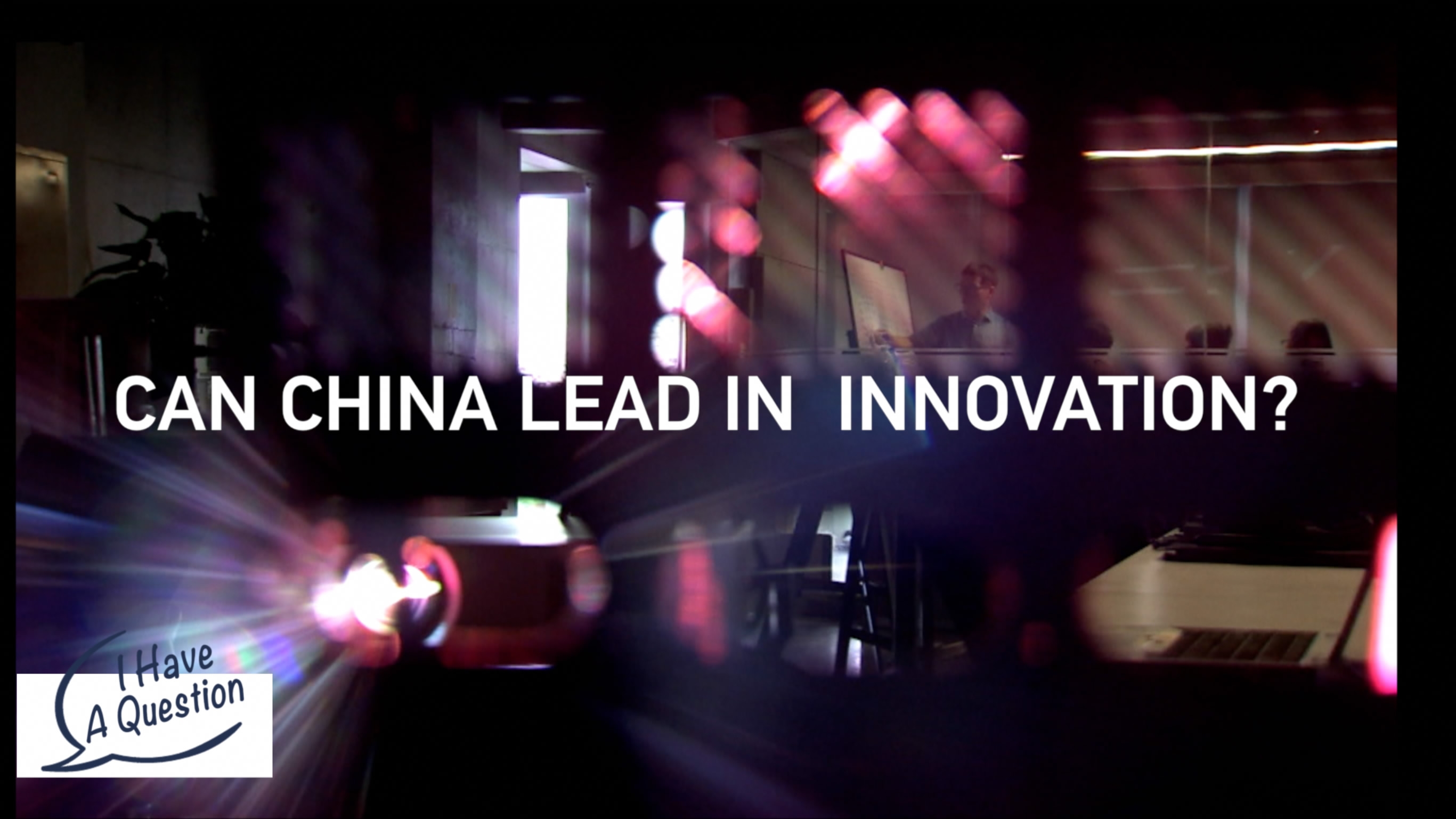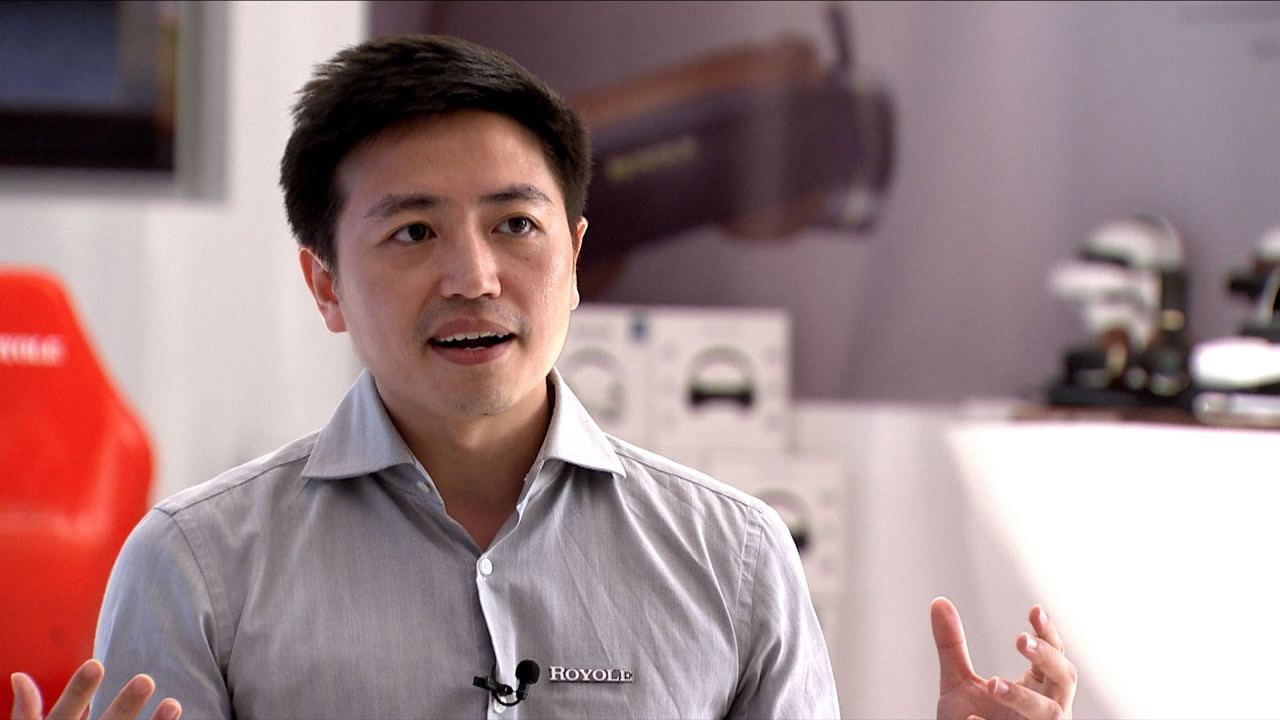
Innovation
23:13, 03-Mar-2018
I HAVE A QUESTION: Can China lead in innovation?
By Han Bin, Wei Lynn and Yuying

CAN CHINA LEAD IN INNOVATION?
Look no further than Shenzhen – when one mentions China and innovation.
The city has transformed from a fishing village to a manufacturing powerhouse and is now a technology incubator. This has trickled down to the city, as it's now host to bustling talent, rapid economic growth, and academics say the model is something developing countries are seeking to replicate.
Think: the advancement of smart phones and the rise of Chinese homegrown brands in this regard. Shenzhen is home to many of the country’s technology giants’ headquarters, such as Tencent Holdings, Huawei Technologies and ZTE Corp.
What has the city of more than 12 million done right? And what must be done to ensure it stays on top of its innovation game? Below are excerpts of interviews we conducted with industry players who have seen, felt, and experienced what the city has offered – and their views on how to sustain this success going forward.
PEOPLE, SPIRIT, INFRASTRUCTURE
Du Juan, Associate Professor from the Department of Architecture at Hong Kong University, says Shenzhen played a crucial role in giving the Chinese government – especially in the early 90s – the confidence to create an economy of market capitalism.
However, she is quick to point out that Shenzhen’s success goes beyond the government’s top-down policy, and investments that the city has garnered from home and abroad.
- Meeting basic needs to attract new talent
“Shenzhen will not be as attractive if it didn’t have all these big businesses and modern facilities… But it will also not be successful if it didn’t have these working class neighborhoods where housing is still very affordable. This is important because any [big] city in history constantly need new blood and ideas to really invent themselves.”
- Possessing the need to improve lives and versatility
“To be able to work on anything; and to spend as much time to create something for themselves and their families. The spirit of believing that anything is possible; and the freedom to invent new businesses, ways of living, and philosophies.”

Du Juan believes for cities to continue to thrive, it should continue to hear from the people – not just the white-collared groups, but also the migrants. /CGTN Photo
Du Juan believes for cities to continue to thrive, it should continue to hear from the people – not just the white-collared groups, but also the migrants. /CGTN Photo
Bill Liu, Chairman and CEO of Royole Corporation, was impressed with what he has observed at the factories he visited in Shenzhen. A Stanford graduate, the company he co-founded designs and makes human-machine interface technologies and smart devices.
- To judge a book beyond its cover
“They do not care about what their factories look like. Things look messy from the outside. But when you step into the factory, you find that the management and production of things are so smooth. They can make world-class components that are sold to top-tier consumer electronics. I think that is really important – being down-to-earth and working hard to make things happen.”
- Burning drive
“It was a weekend at the high-tech region in Nanshan District. But there were so many young people sitting around, talking about what they do with so much passion, energy and belief. That is very important for entrepreneurship.”

Bill Liu says "openness, creativity and the entrepreneurship spirit" will keep Shenzhen shining bright in the future. /CGTN Photo
Bill Liu says "openness, creativity and the entrepreneurship spirit" will keep Shenzhen shining bright in the future. /CGTN Photo
THE WAY FORWARD: MORE INTERNATIONAL COOPERATION
Zhou Luming, former head of the Shenzhen Science and Technology Association, is very keen to witness how China transforms from the role of a follower, to that of a creator and contributor to the global innovation space.
This comes as China has a good bargaining chip on its side – its ever-growing, multi-dimensional demand – which is evolving faster than many developed countries, highlighted Zhou. And it is this demand that drives innovation.
- Transform from upgrading ourselves to coordination with others
“China has to change from thinking independently to collaboratively – to effectively combine the advantages of China and that of development countries. To make adjustments in the way organizations – its systems and mechanisms – are managed.”
- Combine China’s strength with the laboratories of developed countries
“China should leverage on its strengths in its manufacturing ecosystem and demand-driven economy, and combine it with the high technology of laboratories in developed countries. This will be an important combination in the next round of innovation – international cooperation.”
- Introduce non-governmental units to manage creative projects
In other words, to continue to let market demand and supply forces dictate production. “We should [continue to] inculcate the concept of a market economy into the process of innovation…to reduce the role and interference of the government, and to bring in more non-governmental units and not-for-profit organizations to be part of these innovative organizations.”

Zhou Luming calls for Chinese businesses to change in the areas of mechanism and concept. /CGTN Photo
Zhou Luming calls for Chinese businesses to change in the areas of mechanism and concept. /CGTN Photo
When it's said and done, it is easy to achieve success but harder to sustain it. And these industry players have called for Shenzhen to stay true to its core ingredients of being open, environmentally conscious, and affordable.
“The challenge is how can Shenzhen, now having achieved its success, to still have the courage to continue to reinvent, break the rules, and not be afraid to challenge existing standards. The way forward for Shenzhen is to continue this,” Du Juan from HKU says.
And while GDP is only one indicator in measuring a country or city’s success, latest data showed Shenzhen’s 2017 economy – in absolute terms – has almost caught up to that of Hong Kong.
(Video filmed by CGTN cameraman Wang Jigang)

SITEMAP
Copyright © 2018 CGTN. Beijing ICP prepared NO.16065310-3
Copyright © 2018 CGTN. Beijing ICP prepared NO.16065310-3